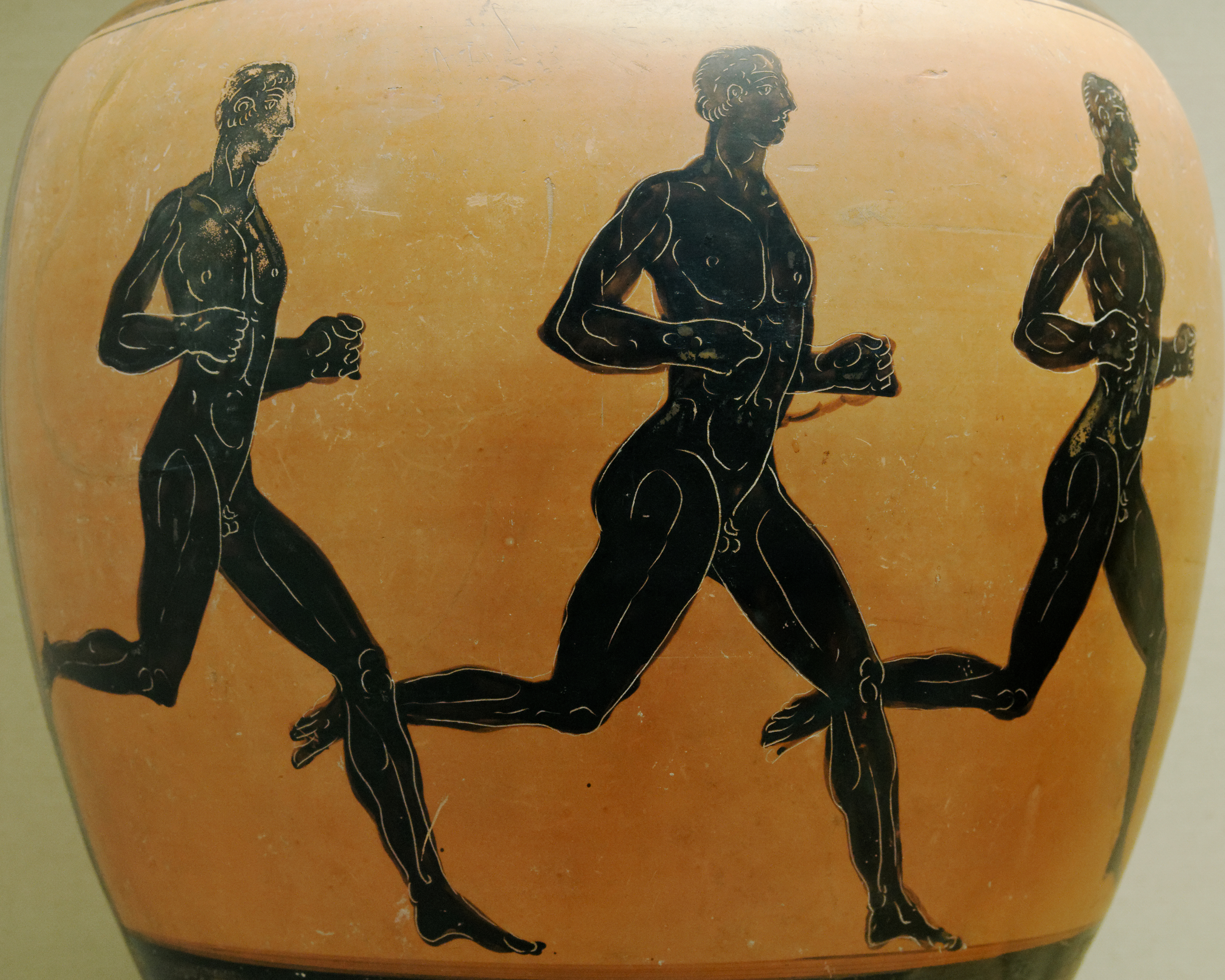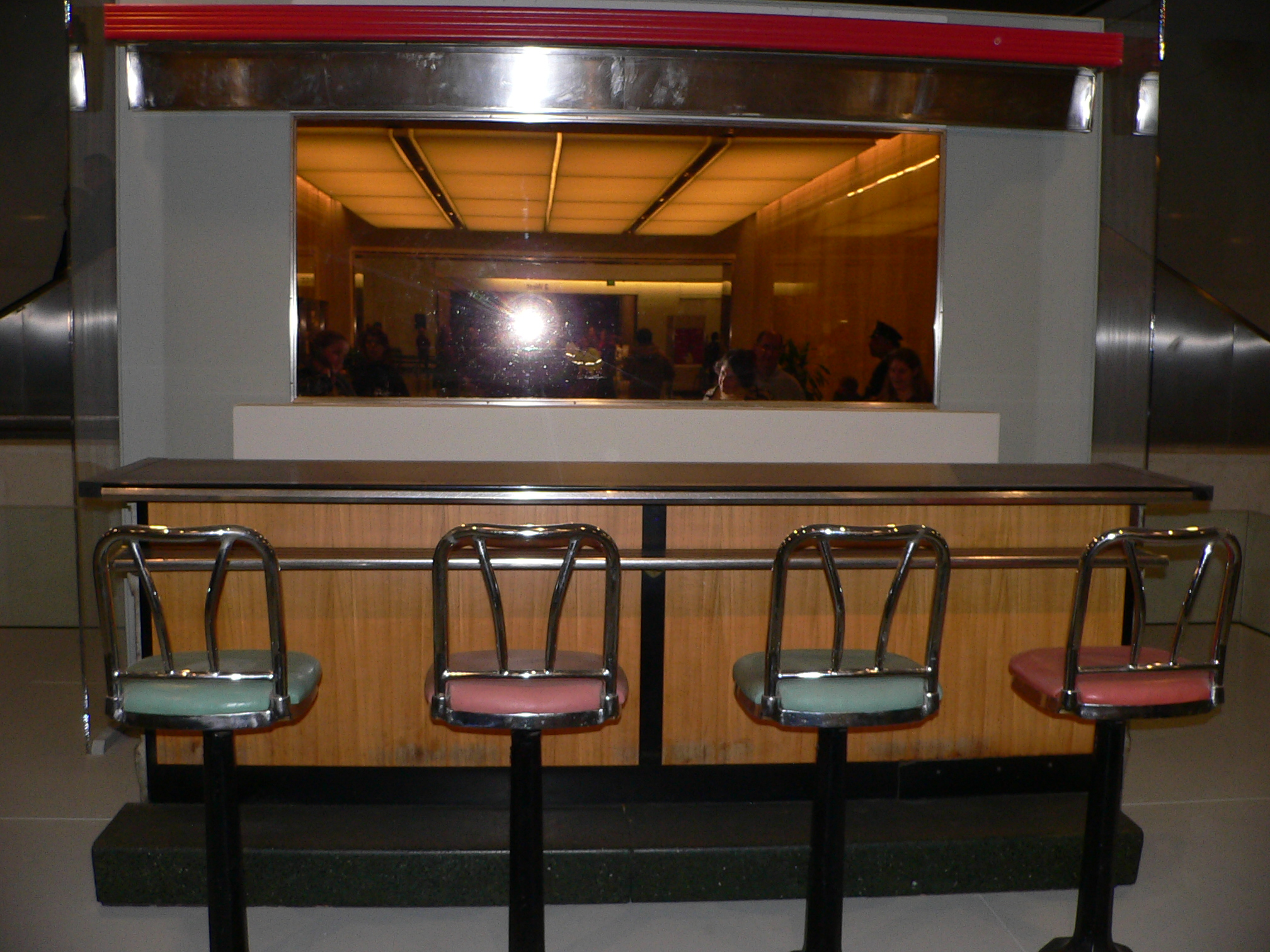|
Pedro Cáceres
Pedro Angel Cáceres (born 2 May 1960) is an Argentine middle-distance runner. He competed in the men's 3000 metres steeplechase at the 1984 Summer Olympics. International competitions Personal bests Outdoor *400 metres – 48.7 (Santiago 1979) *800 metres – 1:48.5 (Bucaramanga 1979) former *1500 metres – 3:42.09 (Kansas City 1988) *One mile – 4:14.0 (New York 1980) former *3000 metres – 8:11.71 (San Diego 1984) *5000 metres – 14:16.2 (Nashville 1987) *3000 metres steeplechase – 8:43.79 (Beaumont 1984) Indoor *1500 metres – 3:47.0 (Bloomington 1987) former *One mile The mile run (1,760 yards, 5,280 feet, or exactly 1,609.344 metres) is a middle-distance foot race. The history of the mile run event began in England, where it was used as a distance for gambling races. It survived track and field' ... – 4:04.97 (Indianapolis 1986) References 1960 births Living people Athletes (track and field) at the 1983 Pan American Games Athletes ... [...More Info...] [...Related Items...] OR: [Wikipedia] [Google] [Baidu] |
Steeplechase (athletics)
The steeplechase is an obstacle race in Sport of athletics, athletics which derives its name from the Steeplechase (horse racing), steeplechase in horse racing. The foremost version of the event is the 3000 metres steeplechase. The 2000 metres steeplechase is the next most common distance. In youth athletics, a distance of 1000 metres is occasionally used for steeplechase races. History Steeple chasing was originally a horse riding event that grew out of hunting with dogs. A pack of dogs would be set on the trail of the prey while riders on horses chased after the dogs, going over fields, leaping fences, jumping over gates and ditches, bounding over brooks and streams, racing through woods, until finally the prey was caught. By the start of the nineteenth century hunting for foxes, hares and stags like this was quite common all over Britain, and even the king of England kept both a pack of Stag Hounds and a pack of Harriers for hunting hares. Occasionally, the riders would go o ... [...More Info...] [...Related Items...] OR: [Wikipedia] [Google] [Baidu] |
3000 Metres
The 3000 metres or 3000-metre run is a track running event, also commonly known as the "3K" or "3K run", where 7.5 laps are run around an outdoor 400 m track, or 15 laps around a 200 m indoor track. It is debated whether the 3000 m should be classified as a middle-distance or long-distance event. In elite-level competition, 3000 m pace is more comparable to the pace found in the longer 5000 metres event, rather than mile pace. The men's world record performance for 3000 m equates to a pace of 58.34 seconds per 400 m, which is closer to the 60.43 seconds for 5000 m than the 55.46 seconds for the mile. However, the 3000 m does require some anaerobic conditioning, and an elite athlete needs to develop a high tolerance to lactic acid, as does the mile runner. Thus, the 3000 m demands a balance of aerobic endurance needed for the 5000 m and lactic acid tolerance needed for the mile. In men's athletics, 3000 metres ha ... [...More Info...] [...Related Items...] OR: [Wikipedia] [Google] [Baidu] |
Place Of Birth Missing (living People)
Place may refer to: Geography * Place (United States Census Bureau), defined as any concentration of population ** Census-designated place A census-designated place (CDP) is a Place (United States Census Bureau), concentration of population defined by the United States Census Bureau for statistical purposes only. CDPs have been used in each decennial census since 1980 as the counte ..., a populated area lacking its own municipal government * "Place", a type of street or road name ** Often implies a dead end (street) or cul-de-sac * Place, based on the Cornish word "plas" meaning mansion * Place, a populated place, an area of human settlement ** Incorporated place (see municipal corporation), a populated area with its own municipal government * Location (geography), an area with definite or indefinite boundaries or a portion of space which has a name in an area Placenames * Placé, a commune in Pays de la Loire, Paris, France * Plače, a small settlement in Slov ... [...More Info...] [...Related Items...] OR: [Wikipedia] [Google] [Baidu] |
Olympic Athletes For Argentina
Olympic or Olympics may refer to Sports Competitions * Olympic Games, international multi-sport event held since 1896 ** Summer Olympic Games ** Winter Olympic Games * Ancient Olympic Games, ancient multi-sport event held in Olympia, Greece between 776 BC and 393 AD * Olympic (greyhounds), a competition held annually at Brighton & Hove Greyhound Stadium Clubs and teams * Adelaide Olympic FC, a soccer club from Adelaide, South Australia * Fribourg Olympic, a professional basketball club based in Fribourg, Switzerland * Sydney Olympic FC, an Australian soccer club * Olympic Club (Barbacena), a Brazilian football club based in Barbacena, Minas Gerais state * Olympic Mvolyé, a Cameroonian football club based in Mvolyé * Olympic Club (Egypt), a football and sports club based in Alexandria * Blackburn Olympic F.C., an English football club based in Blackburn, Lancashire * Rushall Olympic F.C., an English football club based in Rushall * FC Olympic Tallinn, an Estonian ... [...More Info...] [...Related Items...] OR: [Wikipedia] [Google] [Baidu] |
Argentine Male Steeplechase Runners
Argentines, Argentinians or Argentineans are people from Argentina. This connection may be residential, legal, historical, or cultural. For most Argentines, several (or all) of these connections exist and are collectively the source of their being Argentine. Argentina is a multiethnic society, home to people of various ethnic, racial, religious, denomination, and national origins, with the majority of the population made up of Old World immigrants and their descendants. As a result, Argentines do not equate their nationality with ethnicity, but with citizenship and allegiance to Argentina. Aside from the indigenous population, nearly all Argentines or their ancestors immigrated within the past five centuries. Among countries in the world that have received the most immigrants in modern history, Argentina, with 6.6 million, ranks second to the United States (27 million), and ahead of other immigrant destinations such as Canada, Brazil and Australia. Ethnic groups Overview ... [...More Info...] [...Related Items...] OR: [Wikipedia] [Google] [Baidu] |
Athletes (track And Field) At The 1984 Summer Olympics
An athlete is most commonly a person who competes in one or more sports involving physical strength, speed, power, or endurance. Sometimes, the word "athlete" is used to refer specifically to sport of athletics competitors, i.e. including track and field and marathon runners but excluding e.g. swimmers, footballers or basketball players. However, in other contexts (mainly in the United States) it is used to refer to all athletics (physical culture) participants of any sport. For the latter definition, the word sportsperson or the gendered sportsman or sportswoman are also used. A third definition is also sometimes used, meaning anyone who is physically fit regardless of whether they compete in a sport. Athletes may be professionals or amateurs. Most professional athletes have particularly well-developed physiques obtained by extensive physical training and strict exercise, accompanied by a strict dietary regimen. Definitions The word "athlete" is a romanization of the , ''a ... [...More Info...] [...Related Items...] OR: [Wikipedia] [Google] [Baidu] |
Living People
Purpose: Because living persons may suffer personal harm from inappropriate information, we should watch their articles carefully. By adding an article to this category, it marks them with a notice about sources whenever someone tries to edit them, to remind them of WP:BLP (biographies of living persons) policy that these articles must maintain a neutral point of view, maintain factual accuracy, and be properly sourced. Recent changes to these articles are listed on Special:RecentChangesLinked/Living people. Organization: This category should not be sub-categorized. Entries are generally sorted by family name In many societies, a surname, family name, or last name is the mostly hereditary portion of one's personal name that indicates one's family. It is typically combined with a given name to form the full name of a person, although several give .... Maintenance: Individuals of advanced age (over 90), for whom there has been no new documentation in the last ten ... [...More Info...] [...Related Items...] OR: [Wikipedia] [Google] [Baidu] |
1960 Births
It is also known as the " Year of Africa" because of major events—particularly the independence of seventeen African nations—that focused global attention on the continent and intensified feelings of Pan-Africanism. Events January * January 1 – Cameroon becomes independent from France. * January 9– 11 – Aswan Dam construction begins in Egypt. * January 10 – British Prime Minister Harold Macmillan makes the "Wind of Change" speech for the first time, to little publicity, in Accra, Gold Coast (modern-day Ghana). * January 19 – A revised version of the Treaty of Mutual Cooperation and Security between the United States and Japan ("U.S.-Japan Security Treaty" or "''Anpo (jōyaku)''"), which allows U.S. troops to be based on Japanese soil, is signed in Washington, D.C. by Prime Minister Nobusuke Kishi and President Dwight D. Eisenhower. The new treaty is opposed by the massive Anpo protests in Japan. * January 21 ** Coalbrook mining disaster: A coal mine ... [...More Info...] [...Related Items...] OR: [Wikipedia] [Google] [Baidu] |
3000 Metres Steeplechase
The 3000 metres steeplechase or 3000-meter steeplechase (usually Abbreviation, abbreviated as ) is the most common distance for the steeplechase (athletics), steeplechase in track and field. It is an obstacle race over the distance of the 3000 metres, which derives its name from the horse racing steeplechase. Rules It is one of the track events in the Summer Olympics, Olympic Games and the World Athletics Championships, and it is also an event recognized by World Athletics. The obstacles for men are high, and for women, they are high. The water jump consists of a barrier followed by a pit of water with a landing area defined as follows: The pit is 3.66 m (12 feet) square. The pit's forward-direction measurement starts from the approach edge of the barrier and ends at the point where the water jump slope reaches the flat surface of the steeple pathway. The rulebook simply but clearly states, "The water jump, including the hurdle, shall be 3.66 m in length." Pits ... [...More Info...] [...Related Items...] OR: [Wikipedia] [Google] [Baidu] |
5000 Metres
The 5000 metres or 5000-metre run is a common long-distance running event in track and field, approximately equivalent to or . It is one of the track events in the Olympic Games and the World Championships in Athletics, run over laps of a standard 400 m track, or 25 laps on an indoor 200 m track. The same distance in road running is called a 5K run; referring to the distance in metres rather than kilometres serves to disambiguate the two events. The 5000 m has been present on the Olympic programme since 1912 for men and since 1996 for women. Prior to 1996, women had competed in an Olympic 3000 metres race since 1984. The 5000 m has been held at each of the World Championships in Athletics in men's competition and since 1995 in women's. The event is almost the same length as the dolichos race held at the Ancient Olympic Games, introduced in 720 BCE. World Athletics keeps official records for both outdoor and indoor 5000-metre track events. 3 miles The 5000 m ... [...More Info...] [...Related Items...] OR: [Wikipedia] [Google] [Baidu] |


